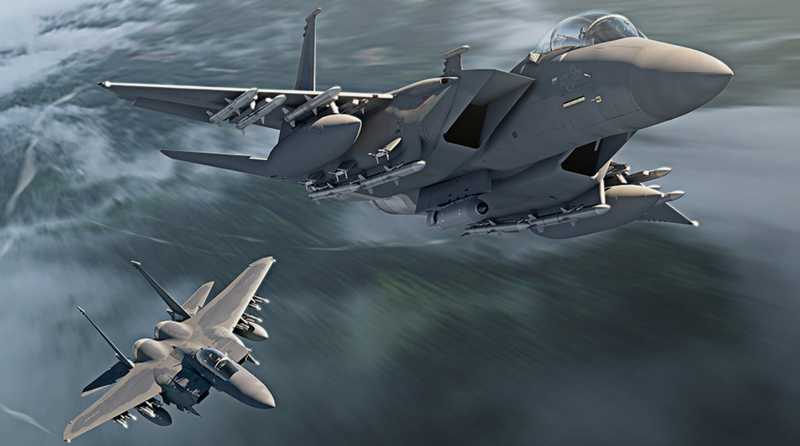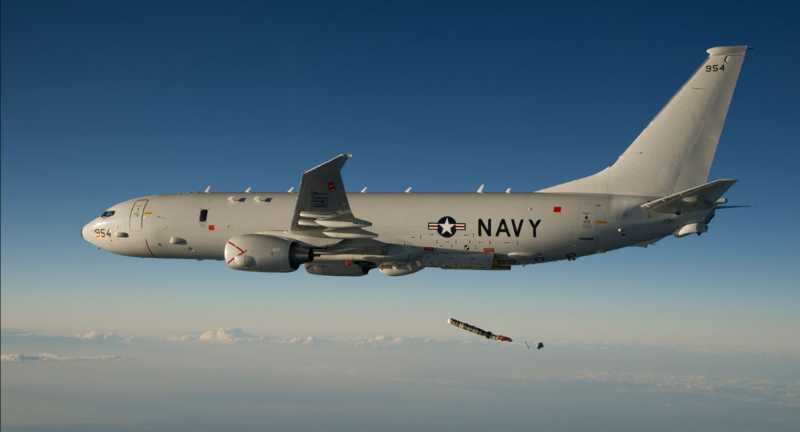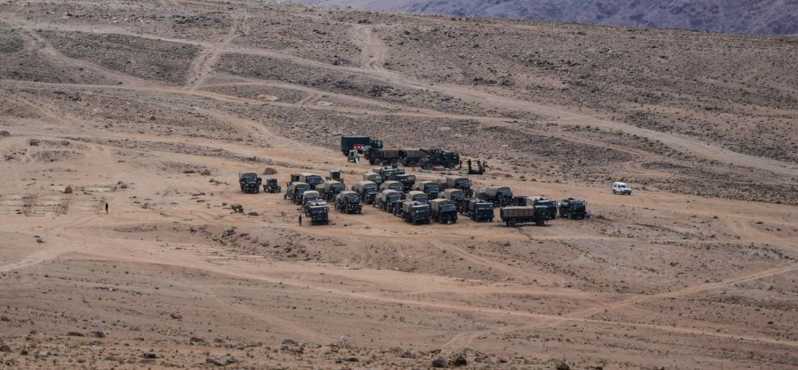The U.S. Air National Guard has recently received its first combat F-15EX fighter. It is reported that on June 5, local time, a pilot from the 142nd Wing of the U.S. Air National Guard flew the F-15EX fighter No. 008 from the Boeing factory in St. Louis to Oregon. Previously, Boeing had delivered six test-configured F-15EXs to the 96th Test Wing of the U.S. Air Force for evaluation and flight tests. The No. 008 aircraft delivered this time is the first combat configuration version for front-line service. In addition, the U.S. Air Force also released photos of the F-15EX No. 007, which is printed with the logo of the 142nd Wing. The aircraft is currently at Boeing’s assembly plant and will be delivered in the next few weeks.
The U.S. Air National Guard said that the remaining F-15EXs will be delivered in the next two years. This type of fighter will be used to replace the currently used F-15C and F-15D models:
The Evolving Eagle
The F-15EX multi-purpose fighter is the latest model of the US F-15 "Eagle" series of fighters. The US Air Force’s purchase and formal deployment of this aircraft is planned to replace the F-15C/D fighters that have been in service for more than 30 years, thereby alleviating the deployment pressure of the US military due to the delayed delivery of the F-35A.
The F-15 fighter is the fourth-generation main fighter launched by the United States in the 1980s and was also a very powerful fighter during the Cold War. Its design goal is to gain absolute advantage in the air and be able to perform air combat, interception, strike and other tasks under any weather conditions. The aircraft adopts a swept-wing aerodynamic layout, has supersonic cruise and all-weather combat capabilities, can carry multiple types of aerial bombs, missiles and nuclear bombs, and has strong combat capabilities. The excellent avionics system and electronic combat capability also give it a clear advantage over similar fighters. In order to counter the US F-15 fighter, the Soviet Union also developed an equally powerful Su-27 fighter during this period, which is the "Flanker" family we are familiar with.
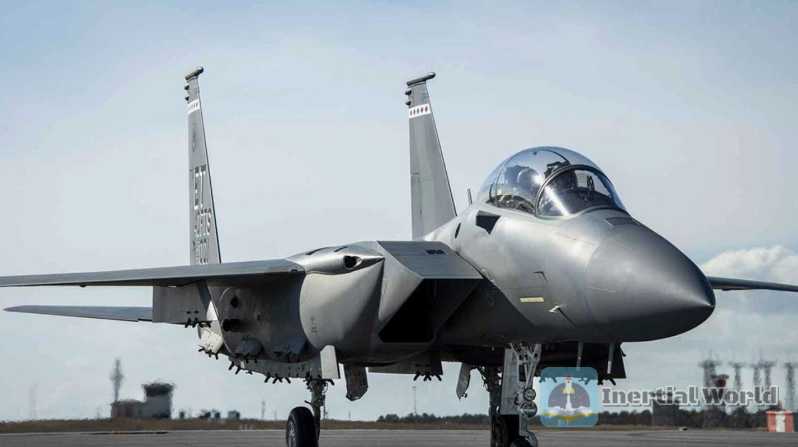
F-15 fighter is not only equipped with the US Air Force, but also exported in large quantities to the US allies, such as Japan, South Korea, Saudi Arabia, etc. According to the needs of different countries, F-15 fighters also have different export versions, such as F-15SA, F-15I, F-15J, F-15K, F-15SG, etc. These fighters have been improved and upgraded on the original basis to adapt to different combat environments and tasks. At the same time, the US Air Force has been updating and transforming its F-15 fighters to maintain its combat effectiveness. In more than 40 years of service, the F-15 has been constantly updated and improved to derive more than 10 types. No.
According to statistics, as of 2022, the US Air Force is equipped with more than 230 F-15C/D and more than 210 F-15E fighters. Among them, the F-15C/D is a single-seat fighter mainly used for air combat and interception, while the F-15E is a two-seat fighter mainly used for strike and multi-purpose. The F-15E is based on the F15C/D, with increased ground attack capabilities and improved air combat capabilities. It is one of the main models of the US Air Force. The F-15E fighter is also a fighter that the US Air Force has participated in many wars and conflicts, such as the Gulf War, the Kosovo War, the Iraq War, the Afghanistan War, etc.
F-15EX multi-purpose fighter
2 In 2021, the F-15EX fighter successfully completed its test flight, and its performance in all aspects has been very mature. This fighter is based on the F-15E fighter, and has been comprehensively upgraded and improved to enable it to adapt to future battlefield environments and challenges. Although the new F-15EX basically follows the traditional aerodynamic shape of the previous F-15 series aircraft, it has updated the wing design internally, adopted a fiber-optic digital fly-by-wire control system, installed new avionics equipment, and carried out a new cockpit design. Compared with the newer F-15E, the F-15EX has greatly improved both its range and weapon carrying capacity.
First of all, the fighter has super high maneuverability, speed and cruising distance. Its two engines are powered by F-100P The W-220 was replaced with the F-110GE-129X, each engine has a maximum thrust of 130 kilonewtons, and this engine makes its aerial movement more flexible and fast. Theoretically, the F-15EX can reach a maximum flight speed of 2.5 Mach. Although its flight speed cannot reach 2.5 Mach in most real situations, it is at least 2.2-2.3 Mach, and it is not difficult to reach 2.5 Mach if conditions permit. The powerful engine also increases its ceiling from 50,000 feet to 60,000 feet. A wider space for flight is conducive to the F-15EX maintaining its cruising speed and also improves the air deterrence of the F-15EX. Not only that, the F-110GE-129X is more fuel-efficient than the F-100P W-220. With a large number of lightweight composite materials and a new architecture, the F-15EX’s range has increased from the original 3,860 kilometers to 4,814 kilometers, an increase of 950 kilometers, or about 25%.
The F-15EX fighter also uses a new electronic warfare system, which is the AN/ALQ-250AN/ALQ-250 Hawk Active/Passive Early Warning Survival System (EPAWSS) provided by BAE Systems. EPAWSS uses multi-spectral sensors and countermeasures, advanced signal processing algorithms, all-solid-state digital circuit technology and artificial intelligence algorithms. It can identify useful signals from complex signal backgrounds and protect itself, thereby helping pilots to effectively interfere with and deceive the enemy’s air defense system in a high electronic confrontation environment. EPAWSS has a strong learning ability and uses artificial intelligence technology to analyze the collected information, and can respond to the threats of flexible and changeable new air defense equipment.
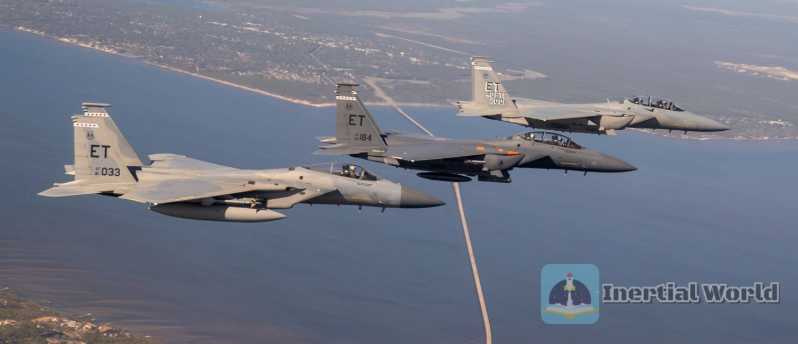
The most prominent feature of the F-15EX fighter is its heavy load and long range. The aircraft has a total of 12 hanging points, which can carry various types and specifications of air-to-air bombs, air-to-ground bombs, missiles, bombs, rockets, etc. The maximum hanging capacity reaches 13.4 tons. When cooperating with F-22 and F-35, it can provide strong firepower support. This is unmatched by any fighter in the world. The aircraft can also choose different weapon combinations according to different tasks and goals to achieve diversified strike capabilities.
In short, the F-15EX multi-purpose fighter is a very advanced and powerful fourth-generation and a half heavy fighter, and its performance in many aspects is very close to the level of the fifth-generation aircraft.
However, the F-15EX fighter is not without shortcomings. First, it is expensive. In the US defense budget for 2021, the purchase price of the F-15EX exceeds 100 million US dollars, more than the 90 million US dollars of the F-35; second, it lacks stealth performance. This makes the aircraft at a disadvantage when facing modern air defense systems and stealth opponents, making it difficult to fight independently, and third, the performance improvement is limited. Experts from US think tanks believe that the F-15EX may become an "expensive target" in future wars
Reasons for choosing the F-15EX
The F-15EX multi-purpose fighter, which has both advantages and disadvantages, has led to different views in the United States on the US military’s purchase of the F-15EX. The main manifestations are the following two points: First, opponents believe that for the fifth-generation aircraft, the F-15EX with a radar reflection area of 4.5 square meters is just an expensive target and cannot survive in a high-confrontation environment. Second, opponents believe that purchasing the F-15EX will squeeze out limited military funds and affect the purchase of the F-35. The US Air Force has also repeatedly stated that it will no longer purchase "old aircraft" and hopes to increase the proportion of fifth-generation fighters to 50% as soon as possible by accelerating the purchase of F-35s and accelerating the elimination of existing aircraft, so that the US Air Force’s combat capability remains the world’s leading. But to the surprise of many people, the US Air Force still plans to purchase up to 200 F-15EXs. The main reasons are speculated to be the following:
First, the F-15EX fighter helps maintain the necessary combat power of the US military. According to the original plan, the US military will replace all F-15s with 749 F-22s, but with the disintegration of the Soviet Union, the United States lost its main competitor and permanently closed its production line after producing 187 F-22s, which directly led to no subsequent models of F-15s. At present, the US Air Force and the National Guard still have 235 F-15C/Ds, most of which are stationed in the United States to be responsible for homeland air defense missions. Because the average age of these aircraft is 37 years, the average flight hours are close to 9,000 hours, and the flight mission is heavy, most of them have serious structural damage and are restricted from high-maneuverability flights. Lieutenant General Duke Richardson of the US Air Force pointed out that 75% of the F-15C/Ds are beyond their service life, and 10% of the F-15C/Ds cannot fly due to structural problems. On November 2, 2007, due to structural damage, the fuselage of an F-15C broke during flight, causing a serious flight accident. It can be foreseen that as the F-15C/D becomes increasingly old, on the one hand, it is necessary to regularly inspect the structural parts, resulting in a sharp increase in maintenance workload; on the other hand, in order to ensure the completion of flight missions, a large number of spare parts need to be purchased, resulting in high support costs. The above situation will lead to a sharp decline in the number of available fighters in the next few years, and a sharp increase in maintenance costs, which will not be able to maintain the necessary national air defense capabilities.
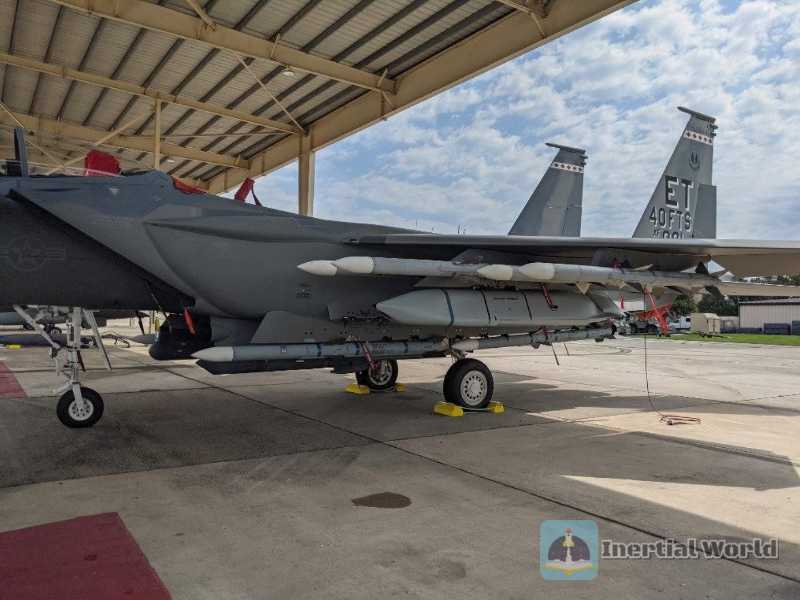
The progress of the F-35, which was originally highly expected, is not satisfactory. Its existing version has also been constantly exposed during use. The low reliability, high maintenance workload and production capacity that cannot meet demand of the F-35 have forced the US military to seek reliable alternatives to ensure the necessary combat power. Secondly, the F-15EX fighter can help the US military quickly generate combat power at a lower cost.
Although the purchase cost of a single F-15EX exceeds that of a single F-35A, the F-15EX still has certain advantages when measured by the full life cycle cost. First, the development cost of the F-15EX is relatively low. The F-15EX uses a large number of technologies that have been verified on export models such as the F-15SA and F-15QA. Foreign customers bear a large amount of R&D funds and development risks, and the US military only bears the development costs of equipment such as EPAWSS and some ground equipment that are only provided to the US military, thereby greatly saving R&D costs; second, the F-15EX has a low full life cycle cost. The F-15EX has a design service life of up to 20,000 hours and a flight cost of $27,000 per hour. The current service life of the F-35 is 7,500 hours, and the flight cost per hour is about $30,000. Although it is expected that the subsequent service life and flight cost of the F-35 will be greatly improved, for now, the F-15EX undoubtedly has an advantage. Third, the F-15EX has a low modification cost. It has more than 70% parts commonality with existing F-15 models, and can use almost all of the same ground equipment, hangars, simulators and other support equipment as existing F-15 models.
According to reports, the Vermont National Guard has budgeted $100 million over five years to upgrade the airport infrastructure at Burlington International Airport to support F-35A operations and replace its F-16 squadron. Finally, the F-15EX has a shorter conversion time. It is estimated that the existing F-15 flight squadron can transition to the F-15EX in about 3 months, while the transition to the F-35 takes years. In addition, in order to facilitate the smooth transition of F-15C pilots, the F-15EX is set to be operated by only one pilot, thereby reducing the difficulty of personnel training. Furthermore, the F-15EX fighter will also help the United States seize the international market and squeeze the arms sales space of other countries. Due to export policy restrictions, many potential customers cannot obtain the F-35, and the F-15EX has outstanding performance, especially under the influence of the US military’s formal signing of the procurement contract, and many countries have expressed their intention to purchase it. According to reports, Boeing has obtained the export license from the US government on January 28, 2021, and can participate in the bidding for the Indian Air Force’s contract to purchase 114 multi-purpose aircraft. The Indonesian government has proposed to the United States to purchase 8 F-15EXs, and hopes to start delivery in 2022 (the Indonesian Air Force may become the first overseas user of the F-15EX fighter). The above two countries are traditional users of Soviet fighters. Indonesia has a total of 5 Su-27SK/SKM and 11 Su-30MK/MK2 fighters. India is equipped with a large number of Su-30MKI, MiG-29, MiG-27, MiG-21 and other Soviet combat aircraft. In addition, India is also a potential customer of Russia’s latest fifth-generation fighter Su-57. It can be seen that by exporting the F-15EX, the United States can further consolidate its position in the international arms trade market, strengthen its influence on relevant countries, and squeeze the arms sales space of countries such as Russia.
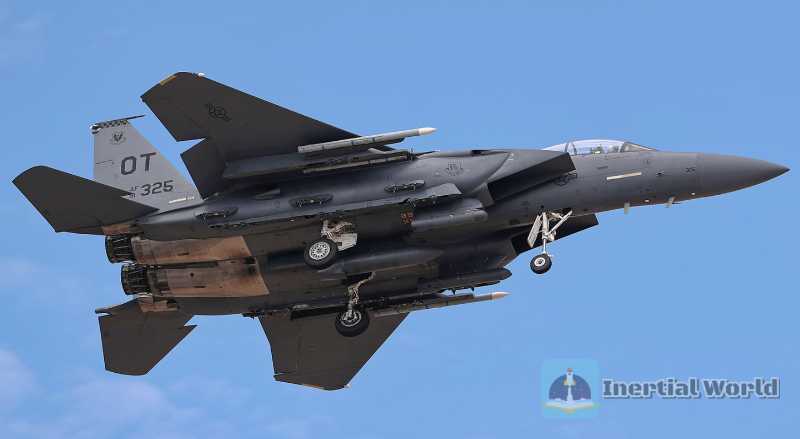
Finally, the fighter also helps maintain a relatively balanced fighter research and development capability. For a long time, the US military aircraft market has been relatively open and has many participants. After several rounds of mergers, Boeing, Lockheed Martin and Northrop Grumman have become the three giants, providing the military with the vast majority of combat aircraft. In recent years, as Lockheed Martin has successively won the F-22 and F-35 projects and Boeing has suffered setbacks in the commercial aircraft market and the military tanker market, Lockheed Martin has been in a dominant position and has gradually formed a situation where it is the only one in the fighter market. Due to concerns about the formation of a de facto monopoly and considering Lockheed Martin’s lack of enthusiasm in reducing the cost of the F-35, the US government may balance it by slowing down the progress of F-35 procurement and relatively strengthening Boeing’s strength. In fact, after receiving the news that the US Air Force purchased the F-15EX, Lockheed Martin CEO Marillyn Hewson assured its investors that the F-35 procurement plan has not changed and the company will reduce the cost of a single aircraft.
Application mode of F-15EX
No matter how excellent the performance of F-15EX is, its biggest problem is the lack of stealth capability. In a battlefield environment where a modern air defense system similar to S-400 is deployed, F-15EX can be detected at a distance of 320 kilometers, while the detection distance of F-35 is only about 32 kilometers. It can be seen that in the real combat environment of fierce competition among major powers, F-15EX cannot survive independently and can only undertake tasks such as national air defense, patrol and surveillance, and long-range ammunition delivery in a low-confrontation environment. In addition, through a comprehensive analysis of the performance characteristics of F-15EX and the future development direction of US military equipment, F-15EX may also have the following application modes:
The first is that F-15EX can provide support for stealth fighters.
Although the F-22 and F-35 fighters equipped by the US military have excellent stealth capabilities, they also have problems such as a small fleet, a small number of built-in weapons, a small number of built-in weapons, and high procurement/use costs. In order to complete combat missions, other types of aircraft must be coordinated. According to its own characteristics, the F-15EX can provide the following support for the fifth-generation aircraft: First, after the fifth-generation aircraft breaks through the enemy’s key air defense nodes and ensures the mastery of one-way electromagnetic control, the F-15EX can use its powerful weapon carrying capacity to launch continuous and efficient attacks on enemy airports, communication centers, command posts, and strategic resource storage sites. In addition, it can also guard the airspace behind the fifth-generation aircraft to prevent enemy sneak attacks; secondly, the F-15EX can use EPAWSS to provide accompanying electronic warfare support for the fifth-generation aircraft, and effectively suppress the enemy’s air defense system while the fifth-generation aircraft maintains complete electronic silence, thereby achieving effective penetration. In addition, the F-15EX can use the equipped AN/APG-82(V)1 active phased array radar to provide target indication for the fifth-generation aircraft through the inter-machine data link; finally, the F-15EX can undertake the current Russian alert mission undertaken by the F-22, and conduct close-range escort and deterrence for Russia’s conventional approach flight training, thereby reducing the mission pressure of the F-22 and reducing costs. In summary, through the cooperation between the F15EX and the fifth-generation aircraft, each can play its own strengths, reduce the cost of use, and achieve better use results
The F-15EX fighter can also provide a launch platform for large weapons.
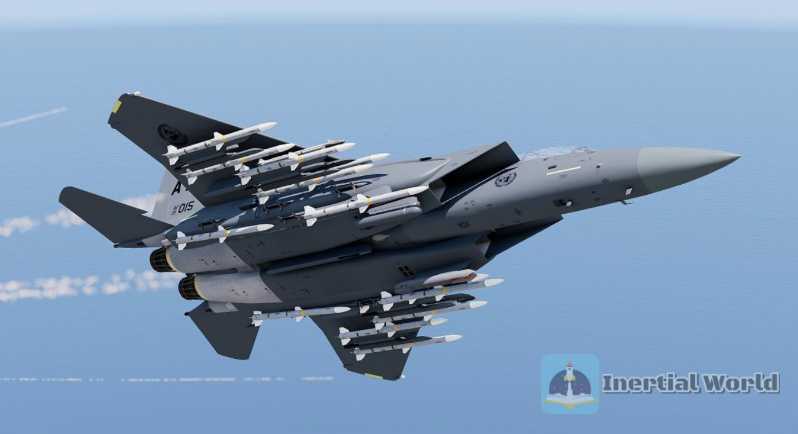
At present, the world’s superpowers are vigorously developing hypersonic weapons. Although the United States has launched multiple development plans, after several rounds of elimination, only the AGM-183A under the US Air Force’s "Air-Launched Rapid Response Weapon (ARRW) project has officially obtained a weapon number. In June 2019, the US Air Force used the B-52 bomber as a launch platform to conduct the first tethered flight test of the AGM-183A. In order to narrow the gap with the world’s advanced countries as soon as possible, the AGM-183A has chosen a more mature technical route. It relies on its own power to fly a short distance, and the warhead has limited attack power. It requires its launch platform to have a high flight speed, flight altitude and flight distance, so that it can carry out effective attacks. In addition, due to the long length of the AGM-183A, it cannot be loaded into the F2 2F-35 has a built-in bomb bay, so only the B-1B and B-2 bombers meet the launch platform requirements. According to Boeing information, the F-15EX’s centerline rack can accommodate weapons up to 6.7 meters long and weighing 3,200 kilograms, with a maximum flight speed of Mach 2.5 and a maximum flight altitude of 18,000 meters. The above features make the F-15EX an ideal launch platform for the AGM-183A. In addition, the F-15EX can also carry the AIM-260 long-range air-to-air missile under development and large weapons such as 900 kilograms of bombs. It can be seen that the F-15EX will become a low-cost, large-capacity large-scale weapon launch platform and play an irreplaceable role.
F-15EX fighter also It can provide a command platform for manned/unmanned collaborative operations. Military powers such as the United States and Russia attach great importance to the technical research of manned/unmanned collaborative operations. The United States has even proposed the Skyborg project, which plans to develop an artificial intelligence system that can be deployed on manned or unmanned aircraft to achieve virtual co-pilot and autonomous combat capabilities of unmanned aircraft. Because the F-15EX adopts a development-oriented mission system architecture, it can easily upgrade software and hardware and constantly adapt to new technological improvements, making the F-15EX an ideal platform for the verification of manned/unmanned collaborative combat technology. In addition, the F-15EX has an empty seat for drone controllers to use, which makes it easier to achieve manned/unmanned collaborative operations. In the US military’s vision, one F15E X will form a typical manned/unmanned 4-machine combat formation with 3 XQ-58 Valkyrie drones. In dangerous environments, the drones will act as sensors for the formation, responsible for detecting enemy targets and attracting enemy firepower. The F-15EX will act as a killer, using the large number of weapons it carries to effectively kill the enemy.
Conclusion
After nearly 20 years of suspension of procurement, the latest member of the F-15 family, the F-15EX, appeared in the US military sequence with a brand new look. There are considerations to fully tap the potential of the F-15, an excellent platform, and more helplessness of being stretched and unsustainable. Whether the F-15EX can continue its family’s undefeated myth in the face of increasingly powerful opponents, we still need to continue to observe.


